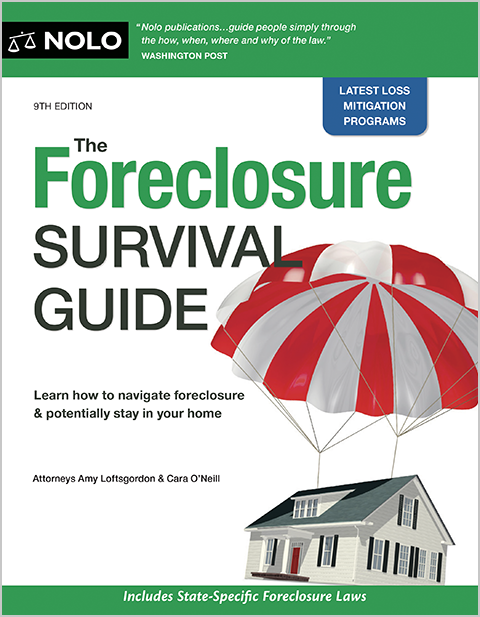Many factors, such as cheap credit, toxic mortgages, and relaxed lending regulations, caused the foreclosure crisis.
Foreclosure rates reached a peak in 2010 during what became known as the "foreclosure crisis." At that time, mortgage delinquencies mostly associated with subprime loans led to the housing bubble's collapse, foreclosures, and the massive devaluation of mortgage-backed securities. In fact, between 2007 and 2012, more than 12 million homes went into foreclosure.
What led to this wave of foreclosures? Many factors contributed. But, mainly, the sheer number of abusive, predatory, and unaffordable subprime mortgage loans made in the early 2000s led to the crisis. Lenders that provided "nontraditional" or "alternative" mortgages between 2004 and 2007 often failed to take borrowers' ability to repay the loans into account. Those who took out these loan products were at high risk of default, and many did default, leading to massive numbers of foreclosures.
The foreclosure crisis was one of the causes of the Great Recession and ultimately led to new federal and state mortgage servicing laws and revised lending standards in the U.S.
- What Was the Foreclosure Crisis?
- Another Factor Led to the Foreclosure Crisis: The Securitization Process
- What Other Factors Caused the Foreclosure Crisis?
- What Are the Resolutions of the Foreclosure Crisis?
- How Can Banks Avoid a Repeat of the Foreclosure Crisis?
- Learn More About Foreclosure
- Talk to a Foreclosure Lawyer
What Was the Foreclosure Crisis?
In the early 2000s, many lenders only required borrowers' assurance that they could repay their mortgage loans. The lenders didn't require income or asset verification. Borrowers simply stated their income and qualified for loans. This kind of loan is often called a "stated-income" loan or, sometimes, a "liar loan" because so many borrowers fibbed about their incomes. Also, many appraisers felt pressure to appraise homes at elevated prices to match loan amounts.
Financial incentives for both lenders and mortgage brokers encouraged them to make bad loans. Brokers got paid without regard for a loan's risk and earned more money if they sold loans with higher interest rates. Lenders and brokers passed the risk on to others, such as investors who bought the loans.
So, these loans presented a significant gamble to investors, consumers, and the economy alike. Loans with little or no documentation verifying borrowers' income and assets tended to default at high, usually shortly after origination. Between 2007 and 2008, the mortgage delinquency rate in the U.S. increased by 53%, leading to the foreclosure crisis.
Ultimately, the foreclosure crisis led to the Great Recession.
What Kinds of Toxic Mortgages Were Available Before the Foreclosure Crisis?
Another Factor Led to the Foreclosure Crisis: The Securitization Process
In the securitization process, lenders bundle mortgage loans, transfer them to a trust, and then sell interests in the trust to investors. With this type of investment, investors receive a portion of the income stream that comes from the borrowers' payments on the mortgage loans.
However, in the early 2000s, these trusts were primarily made up of subprime loans. Those making the loans and creating the trusts didn't evaluate the quality of the underlying mortgage loans or accurately assess the extremely risky nature of those loans. Lenders simply passed the risk of these loans on to the investors.
When borrowers defaulted on the loans, investors lost money, creating a credit crisis.
What Other Factors Caused the Foreclosure Crisis?
The housing bubble that led to the mortgage crisis was the result of a combination of predatory lending practices, lax lending laws, weak standards in the securitization process, and cheap debt. But another factor that led to the foreclosure crisis was inadequate assistance for financially distressed borrowers.
When homeowners fell behind in mortgage payments, they were encouraged to ask their loan servicers for an option to avoid foreclosure (loss mitigation). However, servicers were understaffed, unprepared, and overwhelmed with loss mitigation applications. Securitized loans posed a particular problem because servicers were often unclear about whether they had the authority to modify the loan or provide another kind of foreclosure alternative to borrowers.
When loss mitigation applications didn't get processed or were dual tracked, millions of homeowners went into foreclosure and lost their homes.
In addition, servicers quickly processed foreclosures, often without adequate documentation or a review of the paperwork supporting the foreclosure. Documents were robosigned in many cases, and thousands of foreclosures were completed without regard to proper legal procedures. Banks that started foreclosures often weren't sure if they had standing and couldn't prove they actually owned the mortgage loans for properties being foreclosed.
If you're facing foreclosure, learn about your options in Nolo's The Foreclosure Survival Guide.
What Are the Resolutions of the Foreclosure Crisis?
The government enacted new lending laws and mortgage servicing regulations following the foreclosure crisis. Also, many court settlements, like the national mortgage settlement and independent foreclosure review settlement, happened.
New Federal Mortgage Lending Laws
Most lenders have stopped making subprime mortgages (though some still do), which were common before the foreclosure crisis. Federal laws now limit risky options in most circumstances, including the availability of interest-only periods, balloon payments, and prepayment penalties for certain kinds of loans.
So, predatory loans, such as interest-only loans and negative amortization mortgages, aren't as available. It's also harder to qualify for a mortgage now.
Today, loan quality is much improved compared to the subprime loans that led record numbers of borrowers to default and set off the housing market meltdown and Great Recession.
New Federal Mortgage Servicing Regulations
The federal government enacted new mortgage servicing laws to ensure that loan servicers provide borrowers with assistance if they fall behind in payments. These laws also protect borrowers from some of the abuses that were prevalent during the foreclosure crisis, like dual tracking.
Also, the government created the Home Affordable Modification Program (HAMP) in 2009. The HAMP program reduced borrowers' monthly payments to 31% of their gross monthly income through a modification process.
While HAMP is no longer available, the Flex Modification program now helps borrowers who have a Fannie Mae- or Freddie Mac-owned loan, and is supposed to reduce an eligible borrower's mortgage payment by about 20%. Other loss mitigation programs are available for different kinds of loans, like FHA-insured mortgages and VA-guaranteed loans.
New State Foreclosure Protection Laws
Many state governments also enacted new mortgage servicing laws to deal with the foreclosure crisis. These laws added foreclosure notice requirements, allowed homeowners to apply for loss mitigation, or lengthened the foreclosure timeline.
States also enacted statutes that increased protections for homeowners at risk of foreclosure of high-cost home mortgages and gave homeowners a chance to participate in foreclosure mediation.
Some mediation programs require the lender to participate if the homeowner chooses the mediation option. Other programs require both the lender and borrower to attend mediation. Usually, a third party (a "mediator") manages the mediation process and mediates the loss mitigation discussions.
Legal Settlements Over the Foreclosure Crisis
The National Mortgage Settlement of 2012 required that certain banks—Ally/GMAC, Bank of America, Citi, JPMorgan Chase, and Wells Fargo—provide extensive relief to borrowers through required servicing standards, loan modifications, refinancing, and even cash payouts.
The servicing standards were designed to help homeowners, both those in good standing and those in foreclosure. These standards required the banks to give borrowers more information about their loans, limited servicing abuses related to fees, prohibited dual-tracking, and more. The standards were in effect until the latter part of 2015 and are now largely covered by federal law.
Also, in 2013, various servicers and federal bank regulators reached an agreement that ended the Independent Foreclosure Review for those servicers participating in the reviews. The terms of the settlement required the servicers to provide billions in direct cash compensation to millions of eligible borrowers and billions in mortgage assistance to pay for loan modifications and deficiency judgment forgiveness.
How Can Banks Avoid a Repeat of the Foreclosure Crisis?
The current housing market is very different than before the foreclosure crisis. Stricter lending standards are in place and mortgage applicants must be much more financially stable compared to pre-crisis.
Risky Mortgage Loans Aren't As Available as Before the Foreclosure Crisis
The foreclosure crisis led to a change in the type of mortgages that lenders made. Post-crisis lending is much less risky.
Again, federal laws now limit risky, "alternative financing" options, such as negative amortization loans. Laws also put limitations on interest-only periods, balloon payments, and prepayment penalties. As long as these laws remain in place, a repeat of the foreclosure crisis isn't likely.
It's Much Tougher to Qualify for a Mortgage Loan Than Before the Foreclosure Crisis
Also, easy credit is no longer available. Lenders now have much stricter requirements for borrowers to qualify for mortgage loans.
Now, homebuyers must have good credit, appropriate debt-to-income ratios, and, generally, make a good-sized down payment. As a result, mortgage delinquencies are down significantly from during the foreclosure crisis.
Learn More About Foreclosure
To find out how the foreclosure process works, see What Is Foreclosure?
For information about how long foreclosures can take, see States With Long Foreclosure Timelines.
If you want to know when a foreclosure can start, read How Soon Can Foreclosure Begin?
Talk to a Foreclosure Lawyer
Based on lending and legal reforms, the U.S. is unlikely to go through another foreclosure crisis. If your home is in foreclosure, you might have more options than you think. You could apply for a loan modification or fight the foreclosure in court. Consider talking to a foreclosure attorney to learn more. A lawyer can advise you about foreclosure alternatives, tell you about your rights in a foreclosure under the law, and help you challenge a foreclosure in court.
If you need additional information about foreclosure alternatives, a HUD-approved housing counselor can talk to you about the various foreclosure alternatives and help you decide what to do. Visit hud.gov to find a housing counseling agency near you, or call 800-569-4287.
- What Was the Foreclosure Crisis?
- Another Factor Led to the Foreclosure Crisis: The Securitization Process
- What Other Factors Caused the Foreclosure Crisis?
- What Are the Resolutions of the Foreclosure Crisis?
- How Can Banks Avoid a Repeat of the Foreclosure Crisis?
- Learn More About Foreclosure
- Talk to a Foreclosure Lawyer

